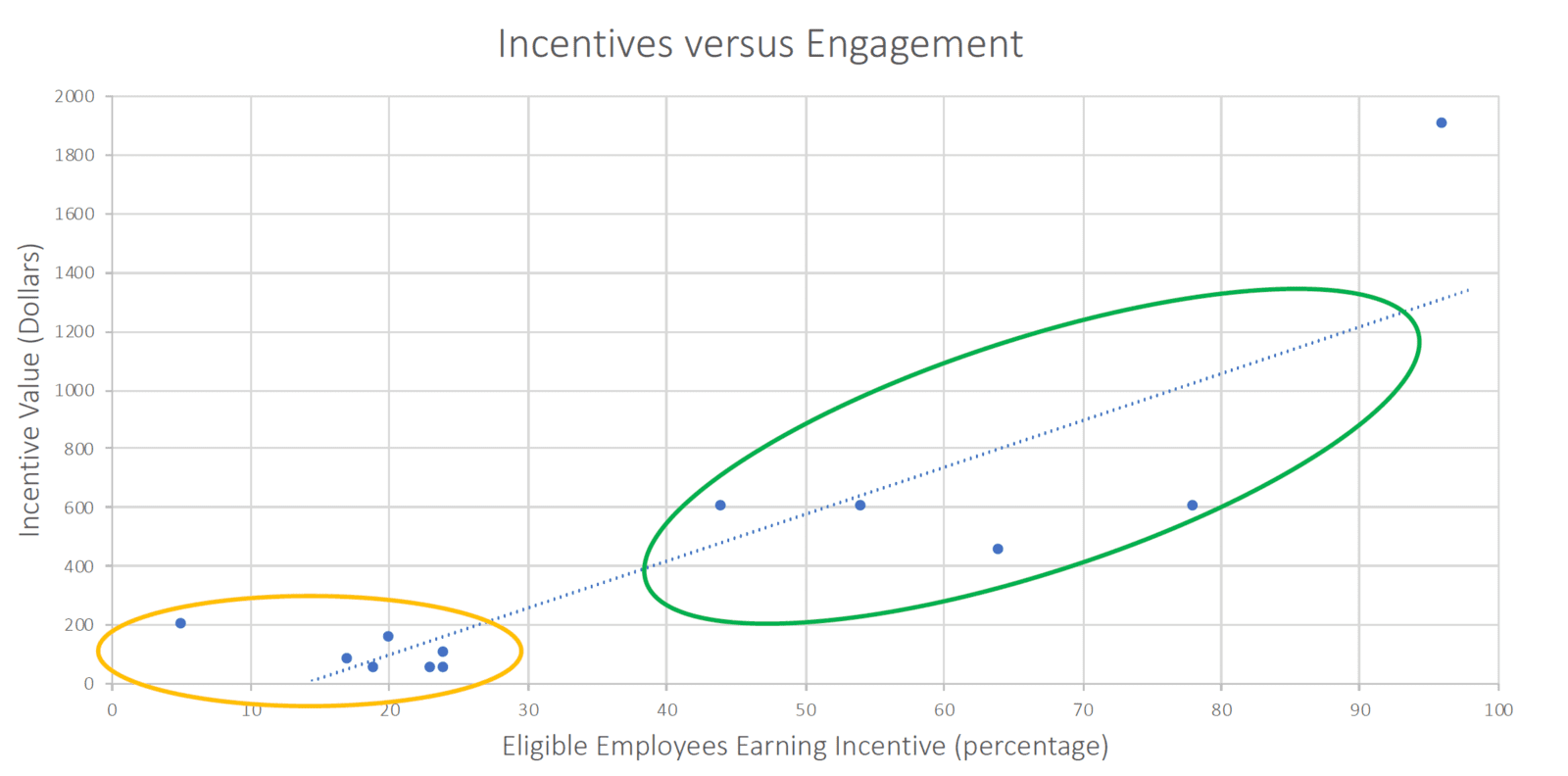
Wellness engagement levels are influenced by a number of key factors.
- Is the program simple enough for the majority of employees to understand?
- Does technology make it easy for employees to participate regardless of their location?
- Are leaders actively supporting the program? – do they “walk the walk?”
- Incentives are clearly in this mix as well.
But what is the relationship between rewards and engagement?
Over the past couple of years Motion Connected has shifted product emphasis from “totally custom” to embrace affordable “best practice” designs. This focus on a more standard program structure allows us to remove a key variable from the analysis. If the programs are essentially the same, or at minimum very similar, then factors such as leadership, communication and incentives will play a larger role in program success.
When we looked at our best practice “Select” programs that ran an annual program through December 2019 we saw some clear trends. These clients ranged in size from less than 50 employees to over 3,000.
As the graph below shows there were two distinct "clusters".

Employers that were offering a more “informal” gift-card based incentive structure provided employees with the chance to earn between $50 and $200. These programs averaged 37% engagement with 50% of these going on to earn a reward – meaning that an average of 18% of eligible employees received an incentive.
The second cluster was created by employers who offered benefit based incentives (typically premium reductions) with a value of $600 or more. These programs averaged 79% engagement with 75% of these going on to earn a reward – meaning that an average of 60% of eligible employees received an incentive.
Since our best practice Select program focuses on high impact behaviors, such as daily physical activity, it is clear that incentives do play a significant role in the aggregate results that programs achieved. However, there were also some clear outliers from the trend and these require a look at other factors. Here are some additional observations from the client data:
- Two of the high performing groups actually over-performed based on their success in engaging employees.
- In one of the cases the incentive structure included a “grand prize” structure. Employees were not only offered $450 for their own personal performance in the program but if they were successful they also had the chance to win a “grand prize” valued at $500. This additional incentive was a powerful motivator and produced an engagement level that would have been expected from a $650 personal reward. Clearly this was an excellent use of budget dollars.
- In the second case, the over-achievement is explained by the size of the company (less than 50 employees) and the strength of the leadership. Active promotion and participation by leaders helped to embed wellness as a core part of the company culture.
- One of the outliers on the low side of engagement had a couple of challenges that help explain their outcome. As the largest company in the group (greater than 3,000 employees) the wellness team had a harder time promoting the program, particularly as wellness was also not one of the highest priorities for leadership. To compound things even more, the company did not allow the use of email as a method of employee communication – providing an additional challenge to engagement levels.
As we move forward with our partners, we are confident that we can guide them on how to create the right environment to maximize their incentive dollars.
If budgets are limited then leadership, communication and a creative use of dollars become even more important to outcomes.
Where employers are able to offer significant benefit-based rewards, then we can work with them to determine likely outcomes based on 60%+ of their employees engaging in year round high impact behaviors.
